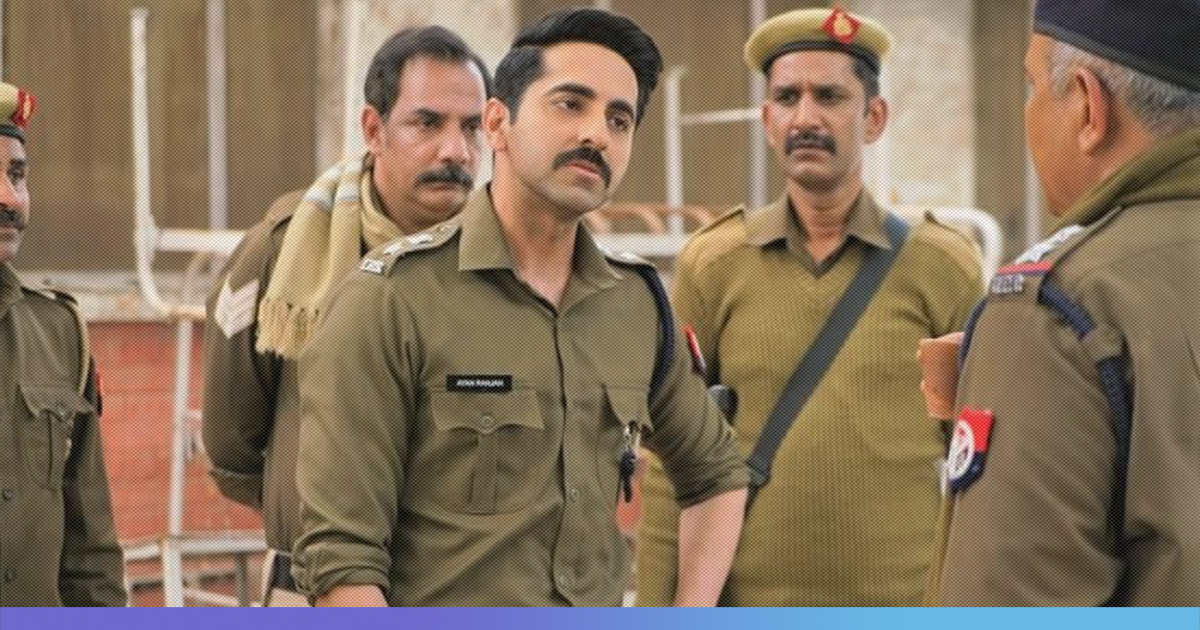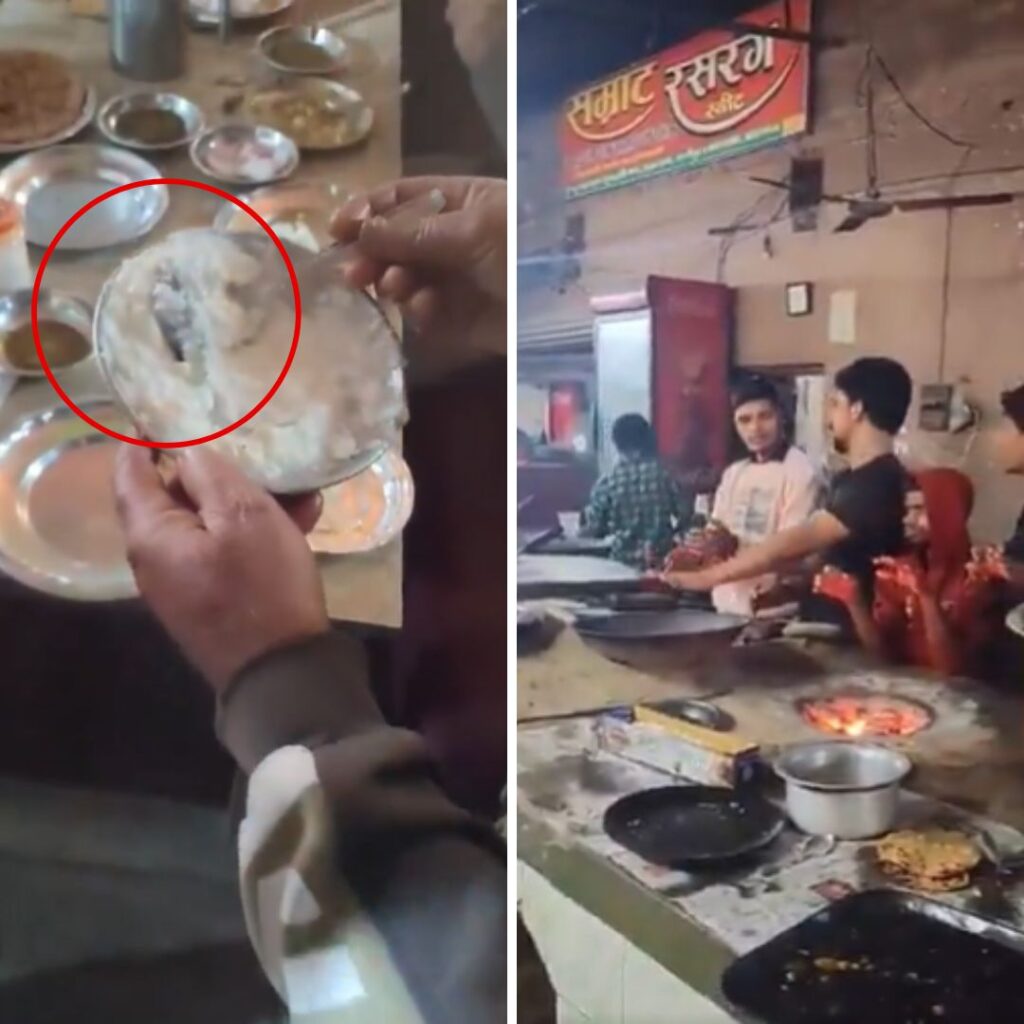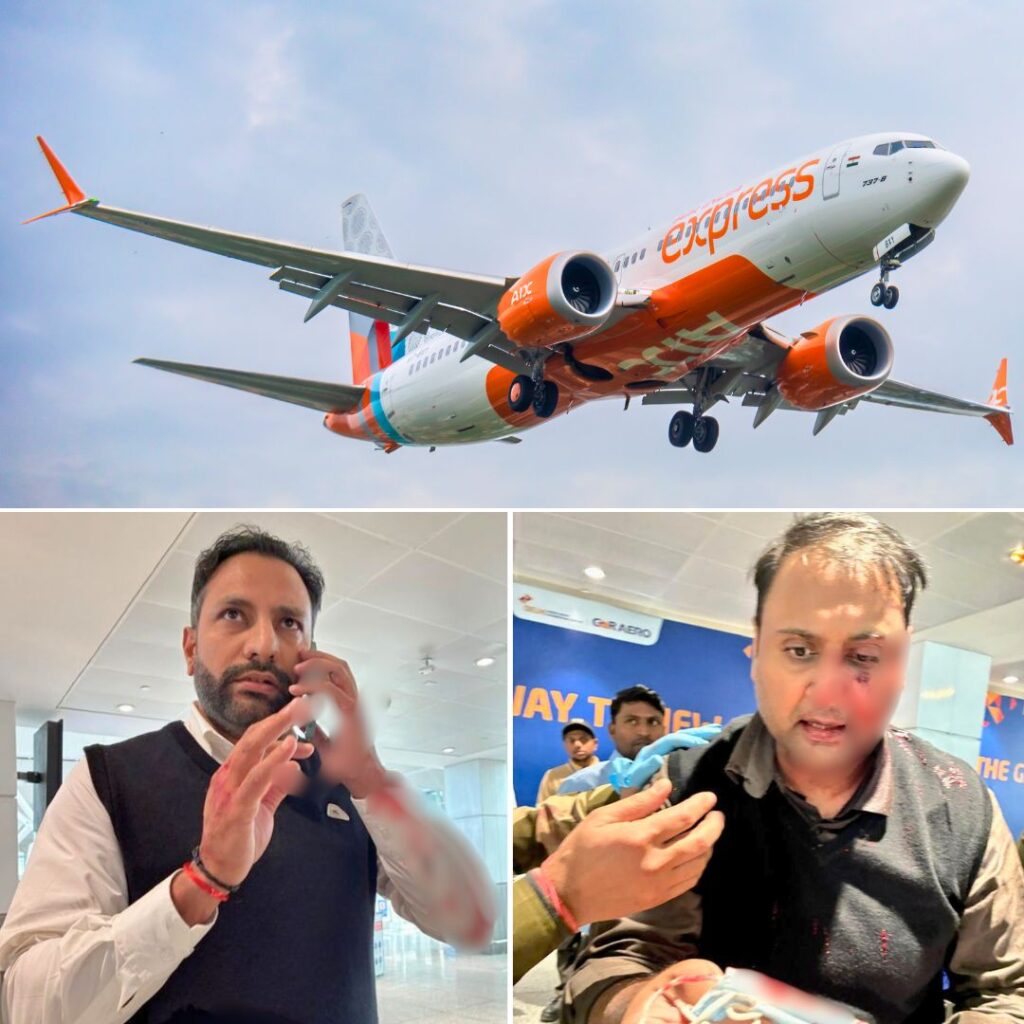The gangrape and murder of two teenage girls was reported in the Katra village of Budaun district, Uttar Pradesh on May 27, 2014. The two girls, cousins, from the Dalit Maurya community, were kidnapped, gang-raped and hanged from a tree in Katra Sadatganj.
The girls’ fault? They had asked their upper-caste employer to increase their salary by a mere sum of Rs 3.
The horrific incident shook the collective conscience of the entire country. Flaws and loopholes in the CBI investigation led to nationwide outrage.
Loosely based on the Budaun gangrape-and-murder incident, writer and director Anubhav Sinha, along with co-writer Gaurav Solanki, has crafted a hard-hitting screenplay on the ground realities of the Dalit community. He has painted a frightening picture of the deep-seated caste system which is still strongly prevalent in India.
Article 15 has a powerful tagline: “Farq bahut kar liya, ab farq laayenge” (We have discriminated enough, now we will bring about a change).
The film is dark and there is no moment of relief in it. However, what really keeps us glued to our seats is how accurately the makers of the film have depicted what we read in the newspapers every other day. The story hits us hard, takes us deep into a world ruled by discrimination and injustice, and at the same time, reminds us of the privilege of a certain section of the society just by the virtue of their birth.
Needless to say, each actor in the film has performed their best. Lead actor Ayushmann Khurrana plays an upper-caste IPS officer Ayan Ranjan, who comes to grips with the reality of caste discrimination – something he has only read and heard about, when the gruesome murder case lands on his desk.
Ayan Is Privileged, Yet Unaware Of His Privilege
Ayan journeys to Lalgaon, struck by the beauty of the interiors with Bob Dylan playing in the background.
“Yes, ‘n’ how many years can some people exist before they’re allowed to be free?” the song plays.
Soon, he is shocked and shaken as he is told that he cannot buy a bottle of water from the village of the Pasi community, considered lower caste.
At every point in the film, we are reminded of headlines we come across on the newspapers daily – the innumerable atrocities inflicted on Dalits for no fault of theirs.
Examples of this are in plenty in real life.
Upper-caste men allegedly beating a 21-year-old Dalit man to death in Uttarakhand for having dinner sitting on a chair in front of them at a wedding.
A 12-year-old Dalit boy being brutally beaten up by a group of five minors from the same village for allegedly touching balloons used as decorations in Chamanda temple in Nadroi village of Aligarh on the occasion of Janmashtami.
A Dalit woman in Moradabad, Uttar Pradesh, being publicly thrashed for using a public hand pump.
This includes the very recent incident where we lost 23-year-old doctor Payal Tadvi belonging to the Bhil Adivasi community in Maharashtra. Tadvi, who worked at BYL Nair Hospital in Mumbai, hanged herself on May 22 after allegedly facing casteist slurs from senior doctors at the hospital.
However, to most of us, as to Ayan, these incidents are restricted to the pages of the newspapers and the screens of our phones. The ground reality remains hidden to us while we enjoy the privileges of the world we live in, while we eat at expensive restaurants and go on joyful vacations.
It is only when Ayan walks into the village, only when he witnesses the horrific sight of the two sisters hanging from a tree, only when he sees how everyone knows the truth and yet pretends not to know it, does he realise that the stigma of caste and the associated biases are too strongly rooted in society to vanish anytime soon.
Invoking Article 15 of the Indian Constitution that prohibits discrimination on the grounds of religion, race, caste, sex or place of birth, reality forms the backdrop of the story.
At one point, Ayan’s conversation with his lover and confidant Aditi makes us question the point of caste hierarchy yet again.
“Sab barabar ho gaye to raja kaun banega?” (If all turn equal who would be the king?).
The debatable, unconcluded point being, why do we need a king at all?
Reality Forms The Backdrop Of The Story
Certain incidents in the film might seem exaggerated, but hard as it may be to grasp, brutality of this extent does take place in our society. Only, the world Ayan lives in shields him from it.
Besides the Badaun gangrape-and-murder case, another incident shown in Article 15 is the Una flogging. In July 2016, a group of people assaulted seven members of a Dalit family on the pretext of cow protection in Una in Gujarat. The video of the incident was circulated on social media, enraging people and resulting in statewide protests in the following months.
Remember the neta in Article 15 who pretended to dine alongside Dalits but actually brought his own utensils? No, this was not a made-up story.
Shameful as it is, in 2018, a minister in the Uttar Pradesh government triggered a controversy for reportedly bringing his own food and water with him at a dinner hosted at a Dalit household at Aligarh. However, Suresh Rana, the minister in the Yogi Adityanath cabinet, denied the allegations.
Manual scavenging is another reality vividly depicted in the film. The entire village of Lalgaon almost came to a halt when these manual scavengers went on a strike. There was garbage all around and people could hardly walk.
Manual scavenging is modern-day slavery. That it continues in the 21st century India is something that should horrify and outrage us all. Scores of people lose their lives during the process. Despite all the horror they have to daily go through, they are treated with disrespect, contempt and disregard.
Article 15, a mirror of our society, has given us a character to cherish – Dalit leader and activist Nishad, with the strong mind of a revolutionary and the compassionate heart of a lover. Although Ayan is the main protagonist of the story, Nishad, in his short role, leaves behind a remarkable impression.
Nishad, however, is not just a fictional character but is seemingly inspired by Chandrashekhar Azad Ravan, a social and Dalit activist, and co-founder and president of Bhim Army. Bhim Army is an organisation that works for the emancipation of Dalits through education and runs free schools for Dalits in Uttar Pradesh. In 2017, he was charged under the National Security Act by the Yogi Adityanath government for protesting against upper-caste violence.
Nishad’s dialogue “Hum kabhi Harijan ho jate hain, kabhi Bahujan ho jate hain. Bas jan nahi ban paate hain taaki jan gan man me hamari bhi ginti hai” (There are times when they treat us as ‘Harijans’ and at times just as a part of the crowd, only never as individuals with rights)”, serves as the story’s conscience-keeper, and hits us right in the heart.
All these incidents make up the sad reality we are a part of. The two girls in Badaun were raped and murdered, the men in Una were flogged and Ravan was arrested in a bid to remind them of their status in society. Absolute acts of shutting down people from the lower castes have been an inveterate, long-established habit of the country.
Where Is Humanity?
Article 15 makes us question the existence of humanity at every step.
Police official Bhramadatt is a character we realise is controversial at the very beginning. In several scenes, we see Bhramadatt being kind to street dogs, feeding and petting them, while on the other hand, being downright cruel to the so-called lower caste villagers. This reflects the character of several people in our society. While being kind to animals is worthy of appreciation, what about all the injustice that they see around themselves and choose to ignore?
Bhramadatt turns out to be one of the men who raped the two girls. He can be seen ill-treating fellow police officer Jatav only because he belonged to a caste considered lower than that of his.
Is this not what happens in several parts of society? While people are seemingly kind to some, they choose to be indifferent towards those who are really suffering. They misbehave with people holding the same position that they do in their workplace, only because they belong to a so-called lower caste.
More often than not, which is amply proved by several incidents, rape and violence are the tools to ‘show them their place’.
An impactful film that tackles the issue of caste discrimination which is rampant in India, Article 15 makes us wonder where we stand in society.
Caste-based discrimination is an ugly reality in India. Violence against Dalits on account of their caste is a horror that prevails in various parts of the country.
While some people talk about brotherhood and equality, several others firmly believe that a person’s caste can determine their livelihood, their social status, who they can marry, where they can live, who they can touch and who they can walk around and eat with.
Incidents of violence against Dalits continue to take place month after month, year after year. People from the upper castes reduce Dalits to a level which does not even allow them to eat together at the same table.
It is true that the Indian Constitution guarantees equal rights for all its citizens, but whether or not this has really helped change people’s narrow mindset, is still a question.
It is extremely unfortunate that such an evil system has existed unchallenged for decades now. People from ‘lower castes’ who have dared to revolt have often been crushed by a society which has lived on with the deeply ingrained belief that caste determines a person’s social status.
While Kabir Singh is breaking box office records despite glorifying a violent, toxic hero, Article 15 makes us believe that Bollywood can still create heroes like Ayan and Nishad, who help us think, introspect and make us aware of our responsibilities.
Like any other film, Article 15 may have its share of flaws and imperfections. It may not change how thousands of people believe in the caste system. It may not change the world, but it surely does begin a conversation.
Also Read: The ‘Other’ Love Story: A Heartwarming Story Set In 90s Between Two Young Women











